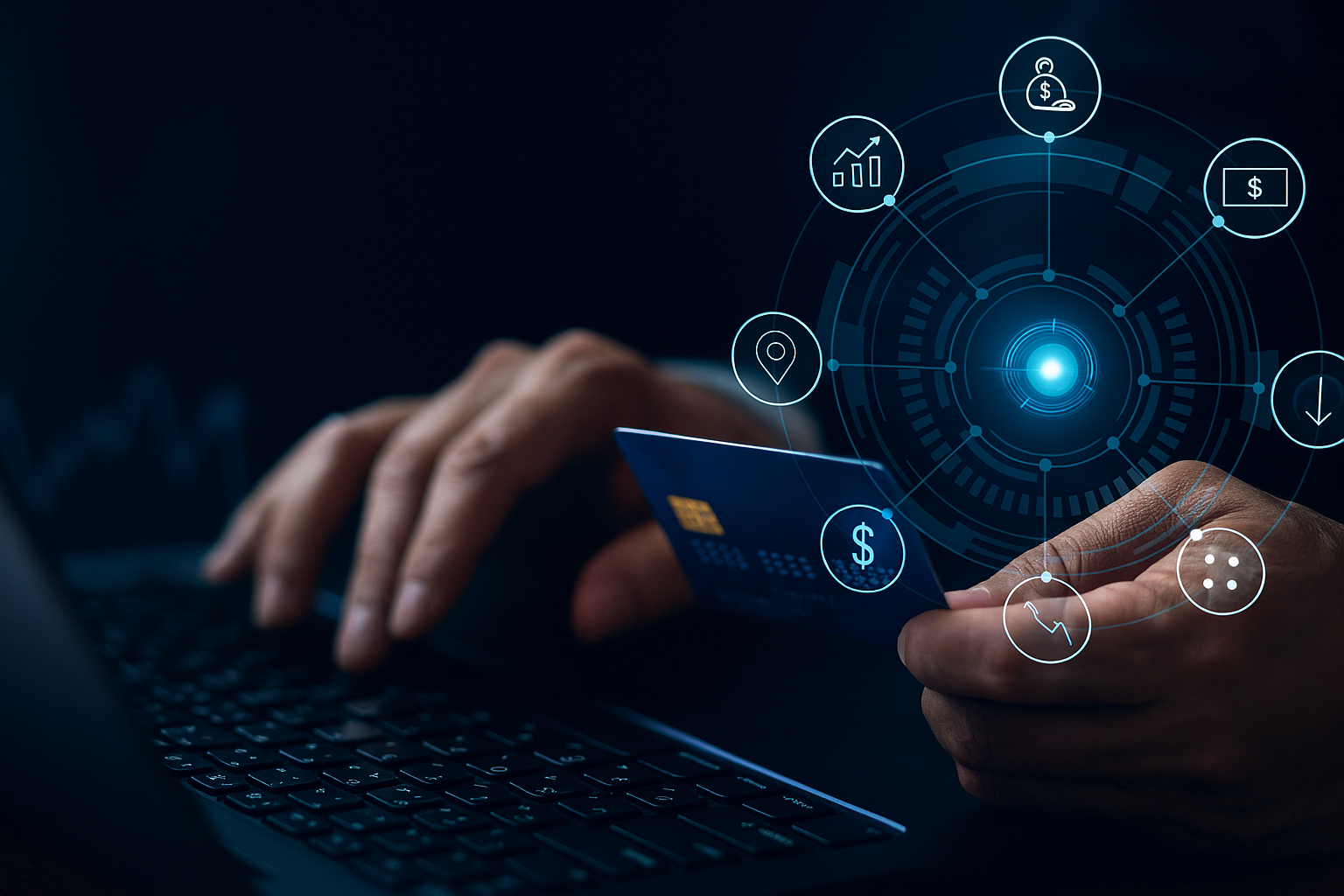Payment Gateway vs Payment Processor: Every Business Needs to Know
4 Min
October 13, 2025
Author:
Garry


At PayFirmly, many business owners get confused between a payment gateway and a payment processor. These terms sound similar but do very different things. In this blog, we’ll explain the difference clearly, show how each fits into your payment process, and help you understand which one matters most for your business growth.
Why trust us? PayFirmly is more than just a payment service. Over 50,000 businesses use our global platform. We understand how gateways and processors operate since we have years of experience with smart routing, fraud protection, and more than 500 payment options.
Think of us as your guide, helping you step-by-step. Our purpose is to keep things clear and assist you in making wiser decisions.
What is a Payment Gateway?
A payment gateway works like your online store's virtual cashier. Let's say a customer enters a store and presents their card to the register. The money is not immediately taken by the cashier. Instead, they check the card, get the payment details, and send it to the bank to get approved. That’s what a payment gateway does online.
It safely collects your customer’s payment information, locks it to keep it secure, and sends it to the right place for approval.
At PayFirmly, we see the gateway as the front door of your payment system. It’s the first thing your customer sees, the checkout page or payment form. So, it needs to work well and look good.
But many businesses think the gateway does everything. That’s not true. The gateway only collects and sends the payment info. It doesn’t move the money. The payment processor does that. Knowing the difference is very important when setting up the right payment system for your business.
Examples of Payment Gateways & How They Work
Some well-known payment gateways you might have heard of are:
- Stripe
- PayPal
- Adyen
Each of these acts as the secure “checkout counter” for your online store. Making sure your customer’s card or wallet details are captured safely.
How a Payment Gateway Works – Step by Step:
- Customer Checkout: A buyer adds products to their cart and types in their payment details on your website.
- Data Encryption: The payment gateway locks the payment details to keep them safe.
- Transaction Request Sent: The gateway sends the locked info to the payment processor to get approval.
- Bank Authorization: The processor contacts the buyer’s bank to see if the payment is allowed.
- Approval or Decline: The bank’s answer is quickly sent back to the buyer through the gateway, either accepted or rejected.
At PayFirmly, we connect with multiple payment gateways so you're not stuck with just one. You can use Stripe, PayPal, and more, and our smart system picks the best option for each payment to get you higher approvals and lower fees.
What is a Payment Processor?
If the payment gateway is the cashier that takes your details, the processor is the one working behind the scenes to move the money. After your card is swiped, the processor talks to the banks to complete the payment.
Well-known payment processors include:
- Authorize.net
- Chase
- Elavon
How a Payment Processor Works – Step by Step
- Data from Gateway: The payment processor receives the encrypted transaction details sent by the gateway.
- Bank & Card Network Check: It communicates with the customer’s bank (issuing bank) and the card network (Visa, Mastercard, etc.) to verify funds and fraud checks.
- Transaction Approval or Decline: The issuing bank decides whether to approve or decline the payment.
- Settlement: If approved, the processor arranges for the funds to move from the customer’s bank to the merchant’s bank account.
Payment Gateway vs Payment Processor – Key Differences
How Do Payment Gateways and Payment Processors Work Together?
A payment gateway and a payment processor might seem different, but they work like teammates. The gateway is the “front door” that collects and protects customer info. The processor works behind the scenes to move money between banks. Together, they make sure every payment is safe and goes through smoothly.
Here’s how the workflow typically looks in a real business scenario:
- Customer Checkout: Enters their payment details on your website or app to complete the checkout process.
- Gateway’s Role: This private data is securely transmitted by the payment gateway after being encrypted.
- Processor’s Role: The payment processor receives the data and contacts the issuing bank to request authorization.
- Bank’s Decision: The issuing bank checks funds, verifies details, and either approves or declines the transaction.
- Processor to Gateway: The processor sends the bank’s response back to the gateway.
- Gateway to Business: The gateway promptly indicates to the customer if the transaction was successful or not.
- Settlement: If approved, the processor makes sure the money transfers from the client's bank account to the company's account, often in a few business days.
At PayFirmly, we take this collaboration a step further. Our global payment platform doesn’t rely on just one gateway or processor. It smartly sends each transaction to the best provider at that time. This means:
- Higher approval rates
- Lower processing fees
- Fewer failed payments
- Faster settlements
Think of us as the coach on the sidelines, making sure both the gateway and the processor are always playing their best game for your business.
Key Components of a Payment System
To fully understand how payments work online, it helps to look beyond just gateways and processors. A complete payment system is made up of several moving parts, each playing a critical role in making transactions fast, secure, and reliable.
- Payment Gateway: Acts as the digital cashier, providing the way for the transaction to start and safely collecting customer details.
- Payment Processor: Runs the behind-the-scenes system, handling communication with banks and card networks to move the money.
- Merchant Account: A special account where money from card payments is kept before it reaches your business bank account.
- Customer Interface: The checkout page or app where customers enter their payment information.
- Security Protocols: Methods like encryption, token replacement, fraud detection, and smart risk checks that keep sensitive data safe.
- Regulatory Compliance Tools: Make sure every payment follows rules like PCI DSS, AML, and GDPR to keep businesses protected by law.
These parts work together to create a complete payment system. At PayFirmly, we combine them all in one platform, so you don’t have to handle each part on your own. This makes things simpler for you, keeps your customers safer, and helps you manage payments better as your business grows.
Which One Does Your Business Need?
Both a payment processor and a payment gateway are essential for your company. While the processor transfers funds between banks, the gateway safely gathers consumer payment information. Both are required in order to finish a payment.
But choosing one to pick isn't the real question. It's about managing them together.
Relying on a single provider causes issues for many companies. Whether startups, online retailers, SaaS platforms, or high-risk industries. Revenue may suffer as a result of unsuccessful payments, increased costs, and fewer approvals.
That’s why platforms like PayFirmly exist. We help you connect to the best gateways and processors, lower costs, and improve payment success,all in one place.
PayFirmly’s Orchestration Advantage
We at PayFirmly don't just deal with gateways and processors. Our platform for worldwide payment coordination is made to:
- Connect 500+ payment methods, from cards and wallets to crypto and bank transfers.
- Intelligently route every transaction to the provider with the best approval rate and lowest fee.
- Protect high-risk businesses with smart fraud tools and strong compliance.
- Grow easily by adding new gateways, processors, or payment methods, no being tied to one provider.
- Provide real-time insights so you can cut costs and maximize revenue.
In simple terms, we provide you with the control that most companies are never able to obtain from a single processor or gateway. PayFirmly brings all contracts, integrations, and risks into one place, optimized for speed and performance.
Conclusion
It's important to understand the difference between payment gateways and payment processors. True business efficiency lies in knowing how to combine the two. That’s why leading companies trust PayFirmly as their payment orchestration company, to simplify complexity, cut costs, and deliver a seamless experience for customers worldwide.
If your business is ready to stop losing revenue to failed payments and high fees, now is the time to act.
Book a free demo with PayFirmly today and experience the orchestration advantage for yourself.
Secure Crypto Payment Orchestration & Processor with PayFirmly
The future of adult payment processing is intelligent, compliant, and built around you.
Join leading adult brands using PayFirmly to boost approvals, cut fees, and simplify multi-processor management — all from one secure dashboard.





